Does your current oven have convection features that you’ve never tried out? We’re here to help you get comfortable with your convection settings and make your holiday meal prep much easier. We often hear from customers that they have convection ovens… but are hesitant to try using the option. We recognize that something new is always difficult to embrace, and never a great idea to do so when you need results you can count on. So, we want to challenge you to try out convection ahead of the holiday hosting season. Now is a wonderful time to get more confident with your convection settings as we enter the colder, “cozy” months in the Midwest and near celebrations and gatherings. For many households, these months mean big gatherings and preparing many dishes at once. If you have purchased a range, wall oven, or microwave oven with convection features, you will be so thankful to have them when you host meals on these gathering days.
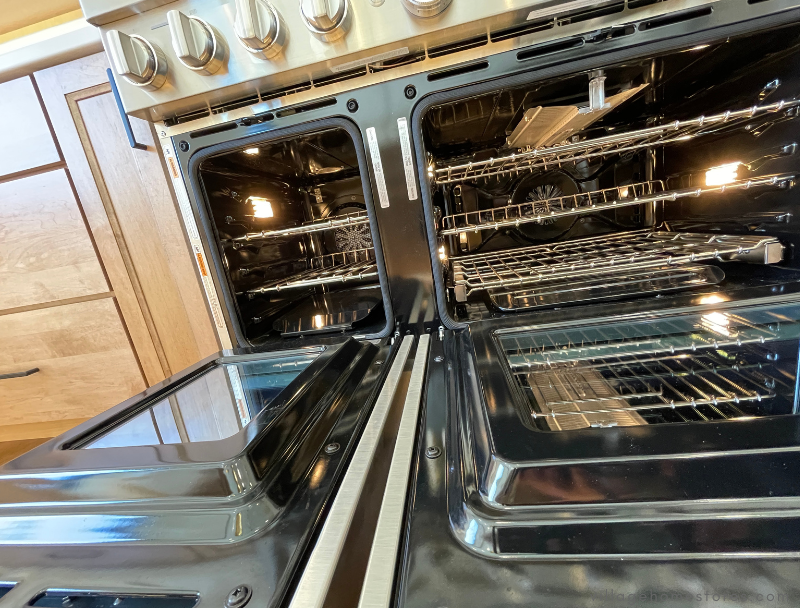
Help! My Oven Says I Have a “Convection” Setting but I’ve Never Used it
So you have purchased a convection oven. Congratulations you have invested in a great feature that is a classic cooking/baking method. Now, let’s get you comfortable with using it. First of all, know that you aren’t alone. And if you purchased your oven from Village Home Stores, you really aren’t alone. Our sales team is available to you before, during, AND after delivery to your home. So, if you can’t find your manual or need a quick pep talk on using your convection, know that we are just a phone call or email away.
What Makes Convection Different?
Convection ovens are used in restaurants and bakeries because they offer consistent and efficient results. When you heat up a standard/conventional oven, the element in the bottom floor of the oven heats up and sends the heat up on direction. When you use a broiler or a countertop air fryer, heat is coming from above. Convection cooking combines heating elements and the use of fans to distribute the heat consistently within the oven cavity to surround your food. Many times, a countertop air fryer or toaster oven adds a fan to help spread the heat. So, you may have used a convection oven before without realizing it.
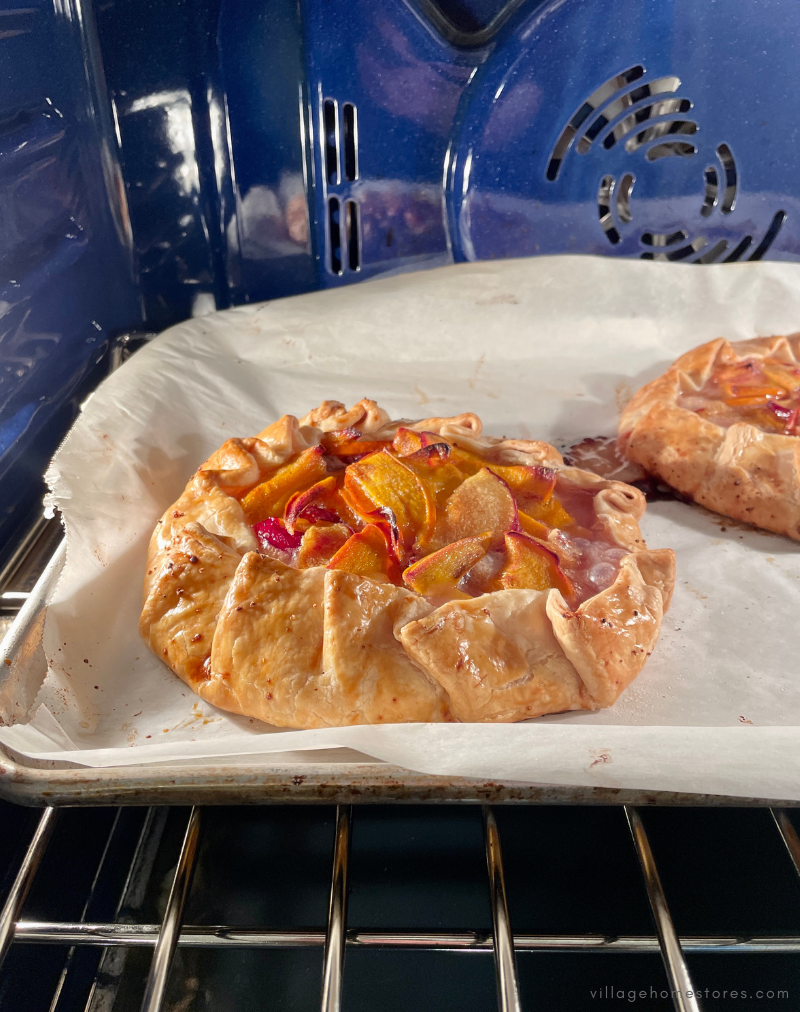
A great example of how convection works is considering a casserole or lasagna. Have you ever had one that came out with the edges totally crispy… and the center barely cooked? This can happen when heat is only coming from one source and the dish itself is heating up more consistently than the contents. Surrounding your dishes and bakeware with convection heat instead gives you even distribution for that same dish you are preparing. A fan at the back of the oven kicks on at intermittent times to help distribute the heat evenly. This helps to champion the temperature your recipe is calling for to actually be the temperature in the oven cavity.
"Convection is just a fancy term for an oven that keeps a consistent heat throughout the entire oven cavity using a fan. What dish couldn’t benefit from surrounding your food on all sides with the temperature it is meant to bake at? And as a bonus, preheat times are shorter!”

If you need the simplest excuse to try out your convection settings here it comes: your oven preheats faster. Using a setting that is designed to distribute heat evenly throughout your oven gets your entire oven to the desired temperature faster. Some of our brands are even renaming controls and settings that use that back fan to “No Preheat” mode for this reason.
Conventional vs. Convection What Do I Have?
If you are house hunting, home sharing, or just unfamiliar with your own oven there is a quick way to spot if the oven uses conventional or convection. Take a peek at the very back wall inside the oven cavity. If it is a smooth, un-interrupted surface like the image below, you have a conventionally heated oven.
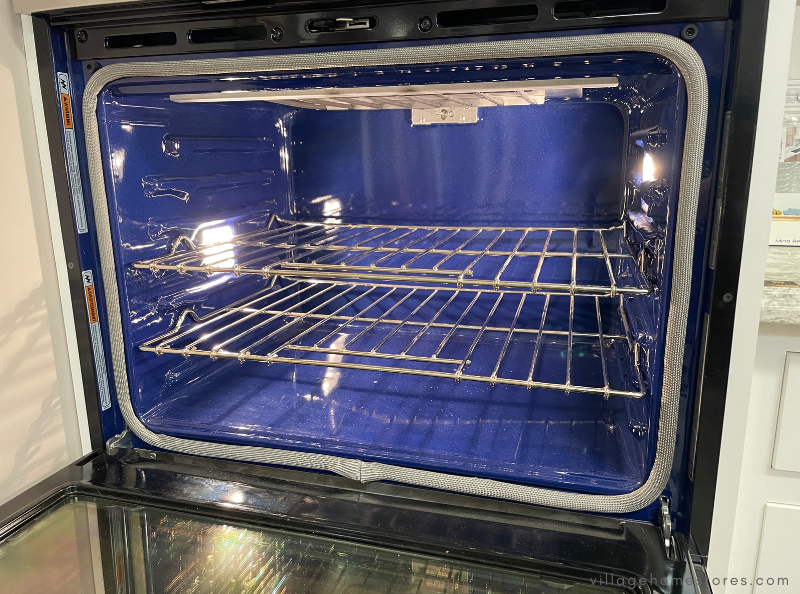
That means that the heat in your oven comes from a heating element that is either a visible or concealed heating coil on the floor of the oven. The heat from that element travels up from the source to heat your food. Convection cooking instead surrounds your dish (or dishes) with a consistent temperature from all directions, using a fan to move the heat around the entire oven cavity. Check out the next image and see that the very back wall of the oven has a fan built into the wall.
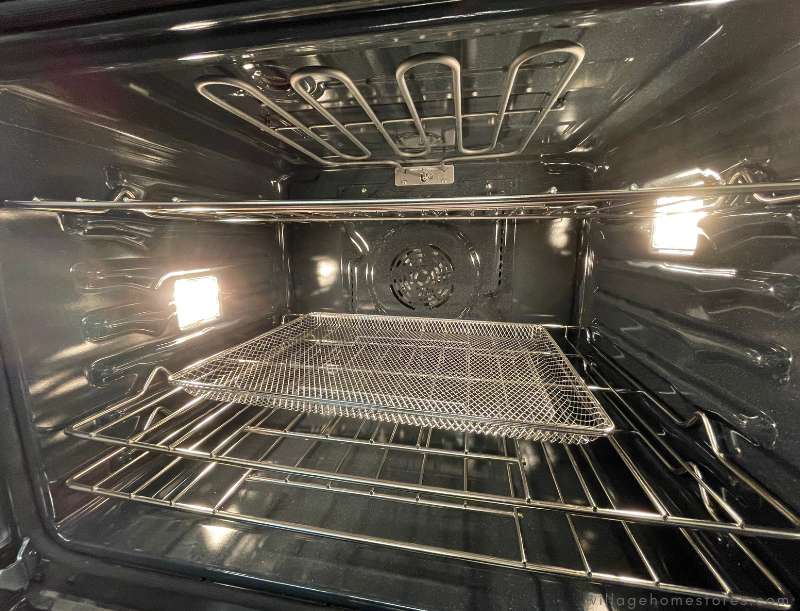
But just because you can spot that fan area in the back doesn’t mean it is working for you. You do have to invite your fan-assisted convection features to the party by selecting “Convection” options on your controls. Some units may even call out specific convection options like “Convect Roast” or “Convect Broil” in addition to a “Convect Bake” option.
Become a Fan of Fan Convection
Once you get in the habit of using your convection features, you will become a big fan (pun intended). Baking three racks of cookies at once (instead of in three different batches) is possible with convection. Packing up your oven racks with multiple Thanksgiving side dishes and baking them all together at 350° is possible with convection.

And if prepping the perfect bird for the gathering is your goal, convection settings will help champion that consistent heat in your oven. You can even use the very top rack for sides as you are finishing the turkey roasting.
The Truth Behind “True” Convection
So, what is the difference between fan-assisted or fan-convection and “true” convection ovens? More Heat. If that convection fan also includes another heat source for the oven, then you are using what we call “true” convection. Another common name for this is “European” convection. Many of the oven models we offer have an additional heating element that partners with the convection fan. It is with this category that you may be able to adjust cooking times and temperature settings.
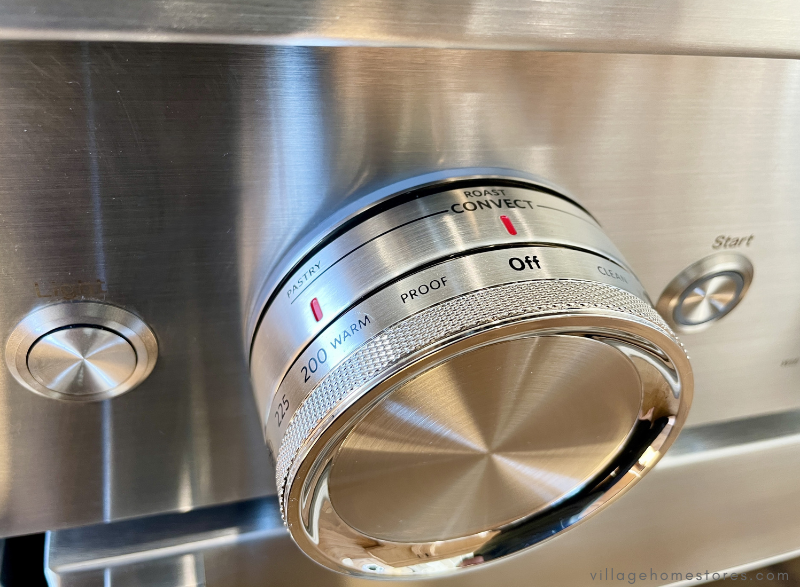
True convection settings can offer you the very best cooking and baking results as the added heating element partners with the convection fan. The goal is to get the entire oven cavity heated to and consistently staying at the perfect temperature you have requested. Our true convection KitchenAid models have a distinct bow-tie design for the convection fan at the back of the oven.
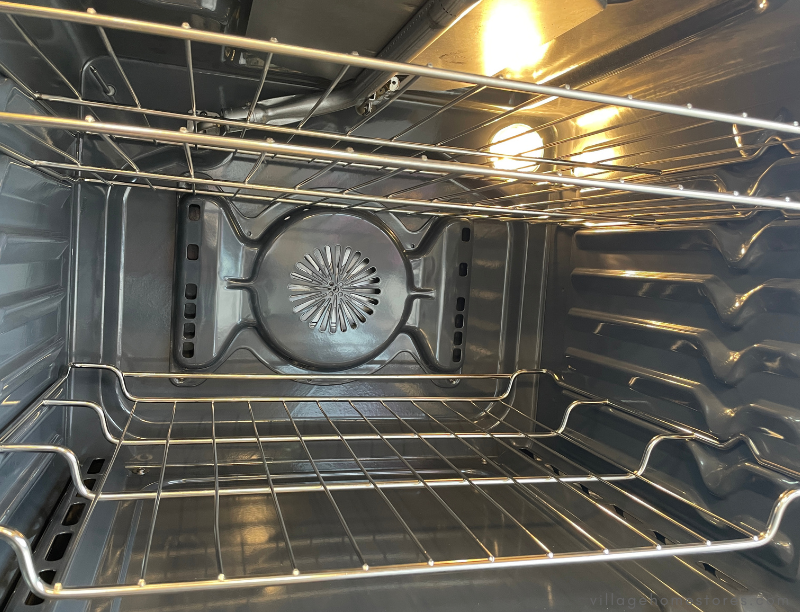
If you look at the image above, you will notice that instead of a circle grate in front of the convection fan, a bow-shaped form instead takes the fan convection one step further. This design helps to channel and direct the fan around your oven cavity. The bow-tie design and fan direction circulates the heated airflow around your oven for large-batch baked goods, consistently caramelized veggies, and well-browned roasts.
Do I Need to Change My Temp or Time with Convection?
The time and temperature adjustments seem to be the main reason why most customers are intimidated to try their convection oven features. We are here to help ease that nervousness and encourage you to get comfortable with your appliance investment. If you are just selecting a convection setting that invites the back fan to your cooking process, you will not need to worry about making any adjustments to your oven temperature or time. The only time difference you can expect is a faster preheat.

You will notice on all oven settings, once you begin making selections you are walked through many steps before selecting “start”. This is no different when you select a convection option. True convection ovens from Village Home Stores will walk you through the steps once you select “Convection” on your controls, making those adjustments for you (if needed). So, if your recipe calls for 425° for 30 minutes, you will enter that information. Once you select start, you may see that your temperature or time may automatically adjust slightly.
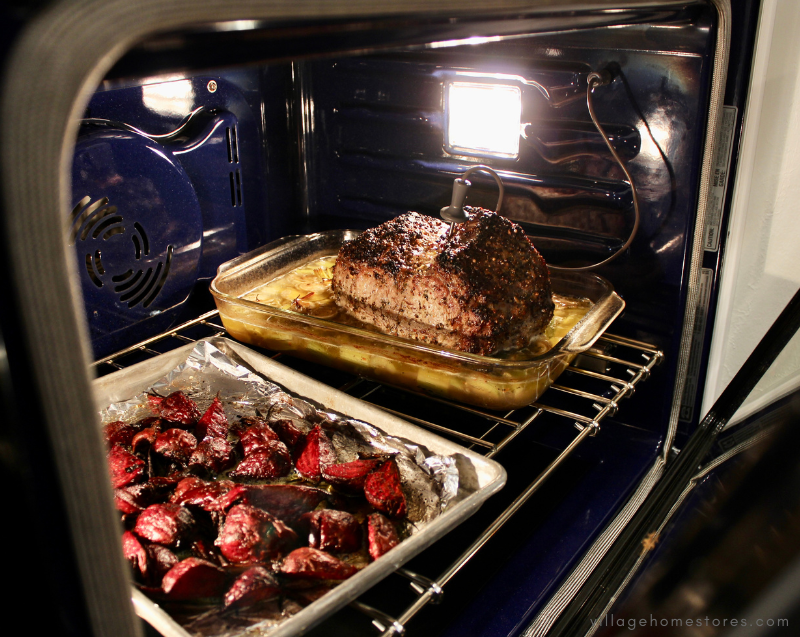
Just remember to keep an eye on the last 5-10 minutes of your normal cook/bake time. There will be a page or two in your manual dedicated to your convection settings. If you can’t find your manual, don’t worry. If you purchased from us, just give us a call or send us a message online, and we will find the info for you. This is also an important moment to remind you there is an oven light and a glass door for a reason. You do NOT need to open your oven up to check inside. Read that again, please. Many times, you can answer your own questions by turning on the light and peeking through the glass. Every time you open your oven door, you are disrupting that perfect, consistent heat distribution party happening inside.
Take it For a Test Drive
Worried about something getting over or under-cooked on your first attempt? Try it out ahead of a big gathering. We recommend test-driving a favorite dish that you are already familiar with making and using the convection fan. Casseroles or lasagnas are great candidates for convection cooking. Just remember to be available nearby during the last few minutes of cooking to keep an eye on when it is done to your liking. Plus, don’t forget that consistent oven cavity temperature means you have the green light to bake a lot at once. I have a convection oven at home and host a large Thanksgiving meal each year. You better believe I have every inch of those racks spoken for and that convection fan rocking for that meal prep.

We want you to be happy with the price and the product you get from shopping locally with Village Home Stores. If you are interested in investing in a new oven and want to explore some of these options in person, please stop by and meet our expert sales team. You never need an appointment to browse our appliance showroom M-F, 9a-5p, and Saturdays from 9a-noon. We are located at 105 S State St. Geneseo, Illinois. You can also message our team and shop online with us at villagehomestores.com Did you try out your convection for the first time? Tag us on social media @villagehomestores on your Facebook, Instagram, TikTok, or YouTube posts. We can’t wait to see what you are cooking in your Village kitchen.
